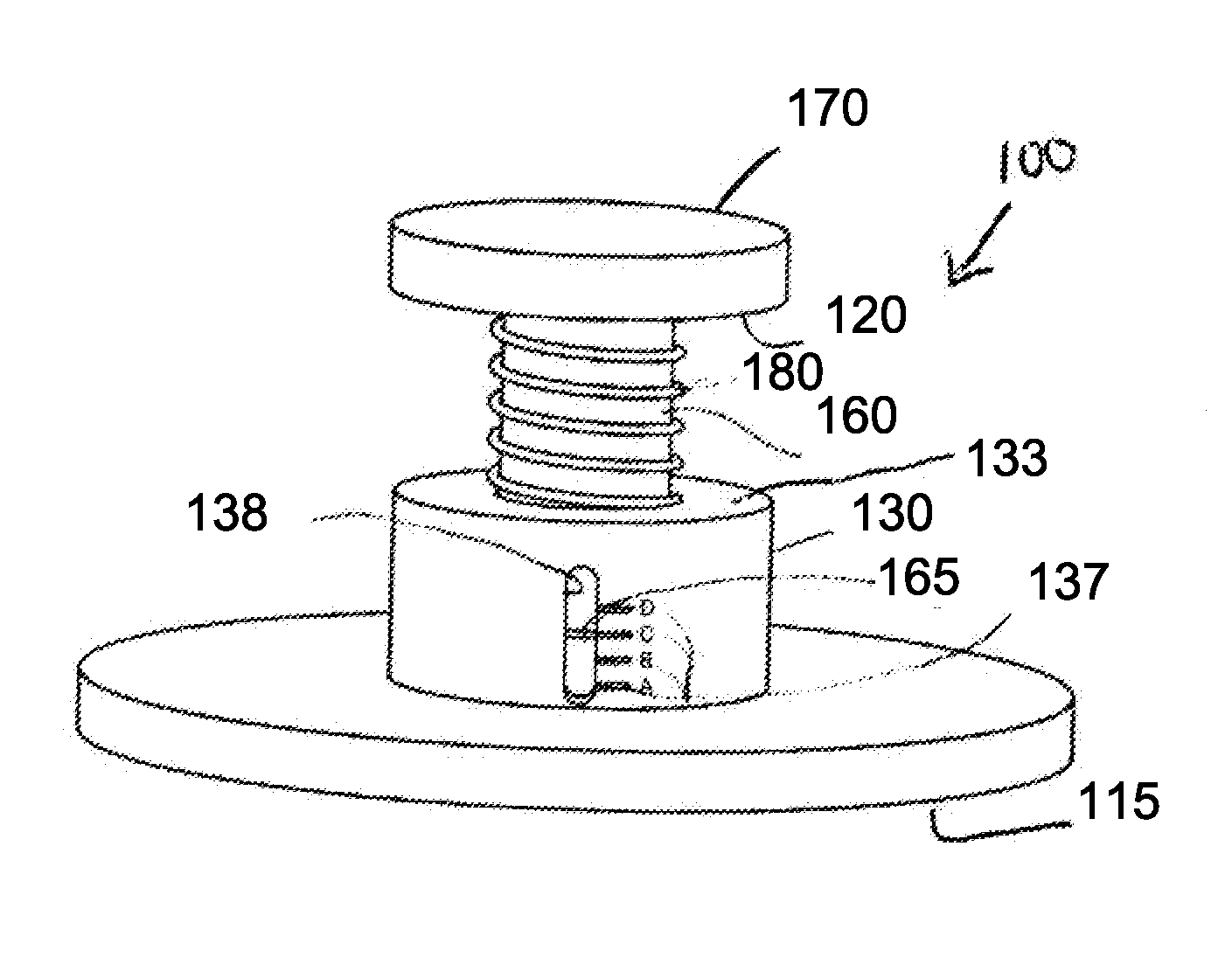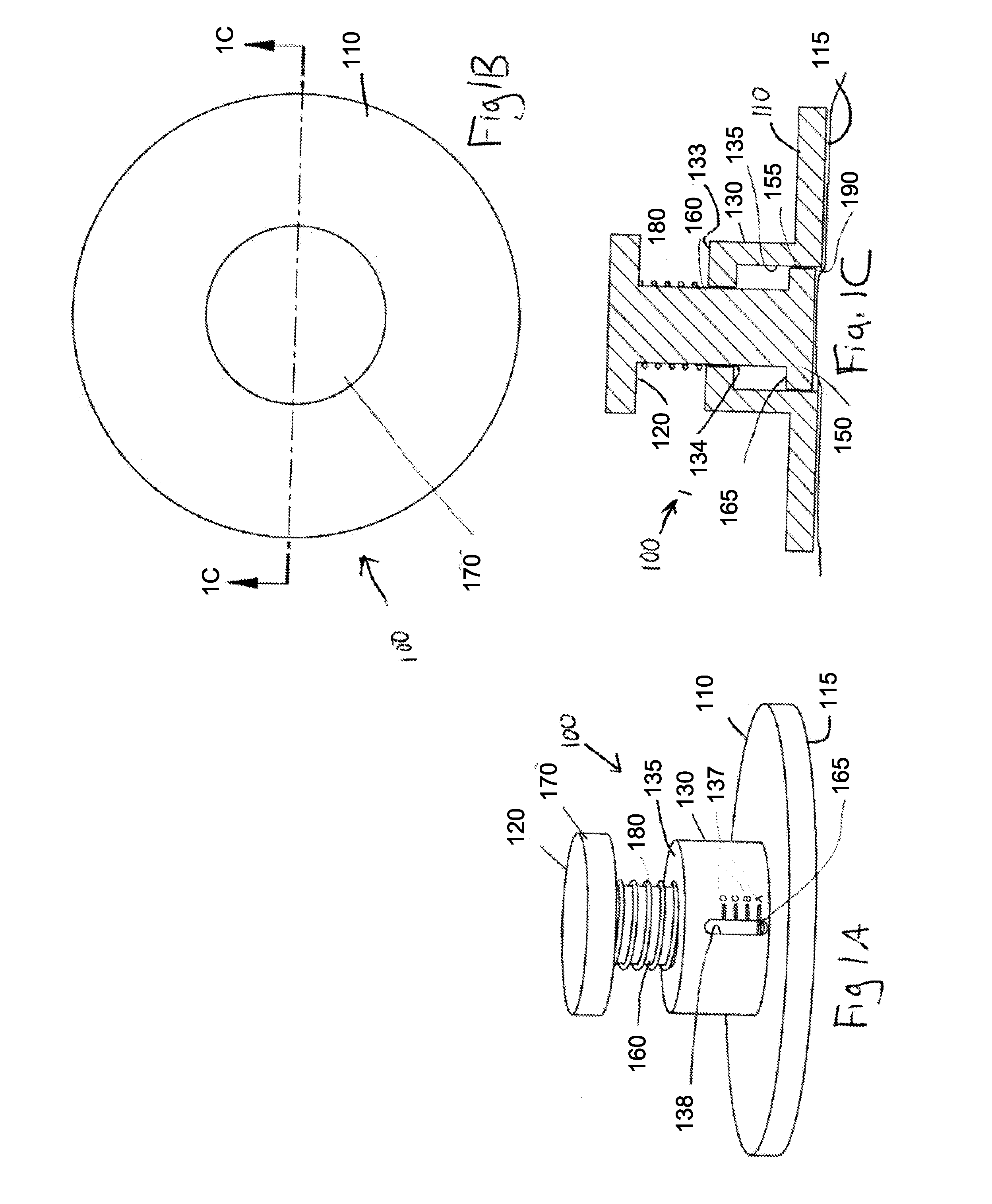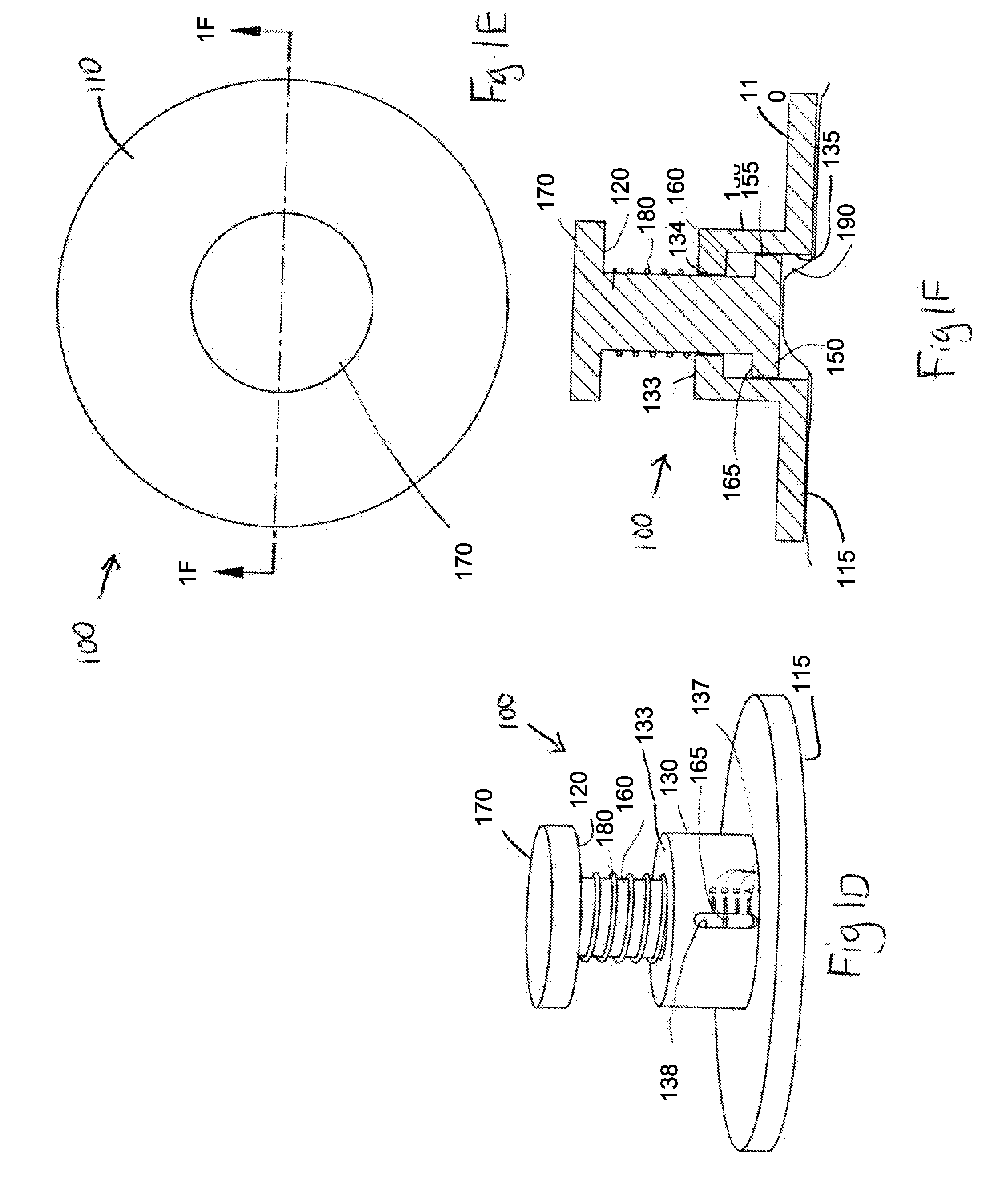Elastic devices, methods, systems and kits for selecting skin treatment devices
a skin treatment device and elastic technology, applied in medical science, diagnostics, dressings, etc., can solve the problems of overproduction of collagen, proteoglycans, and unknown underlying pathophysiology, and achieve greater inherent skin tension and greater inherent skin tension
- Summary
- Abstract
- Description
- Claims
- Application Information
AI Technical Summary
Benefits of technology
Problems solved by technology
Method used
Image
Examples
example i
[0094]To characterize regional differences in human skin mechanical properties, inked grids were placed at various locations, zones or sites on the skin of three healthy human male subjects. Then, skin treatment devices described below were applied to the skin sites and compressive skin strain levels were determined as described below.
[0095]The skin treatment or stress shielding devices were silicone devices constructed of SSF-MLTN-950 by Specialty Silicone Fabricators, Inc. (Paso Robles, Calif.). The samples were initially about 2″×1″ with a thickness of 0.010″±0.001. A pressure sensitive skin adhesive, made of MD 4502 PSA (Manufactured by Dow Chemical, Inc.) of about 0.004″ to about 0.006″ thick was applied to a skin interfacing surface of the devices. The samples had a durometer value of about 45 to 55 (Shore A scale), a tensile strength of about 1,535 psi, elongation of about 719% and a specific gravity of about 1.11 to 1.16. (In other examples, the device material may have a du...
example 2
[0107]In this Example, device strain data and device load (force) per width data from Example 1 were used to determine skin stresses for the eyelid, cheek, upper arm, upper back, abdomen and chest regions as follows:
[0108]Using an assumption that the force of the device, Fdevice, adhered to the skin is equal to the force of the skin at equilibrium, the skin stresses, σskin, (at the edge or boundary of the device orthogonal to the force direction) can be determined by:
σskin=Fdevice / (w×t) (Eq. 5)
where Fdevice / w is the force per width of the device that correlates with the measured εdevice at equilibrium as the device unloads after being loaded by a certain strain and t is the thickness of the skin.
[0109]Skin thicknesses for the eyelid, cheek, upper arm, upper back, abdomen and chest regions were measured using a 10-5 MHz linear array ultrasound transducer (SonoSite M-Turbo, United Medical Instruments, Inc. San Jose, Calif.), as described in Gurtner, G. C., et al. “Improving cutaneou...
example 3
[0112]In this example desired initial strain values (the amount of strain in the device prior to its application on skin) of the device in Example 1 were estimated or approximated. A desired range of resulting skin strain values between 15% and 25% resulted in estimated desired initial strains for various regions using the device described in Example 1. The desired initial strain for the eyelid ranged from 21% to 38%. The desired initial strain for the cheek was about between 23% and 45%. The desired initial strain for the abdomen was about between 31% and 57%. The desired initial strain for the chest was about between 34% and 64%.
[0113]The desired initial strain values were determined by plotting the stress vs. strain at the edges of the dressing for each skin location as shown in FIG. 5. An assumption was made that for purposes of estimating the initial strain value, the stress vs. strain behavior of skin is linear at lower values of stress and strain. This is a valid assumption f...
PUM
 Login to View More
Login to View More Abstract
Description
Claims
Application Information
 Login to View More
Login to View More - R&D
- Intellectual Property
- Life Sciences
- Materials
- Tech Scout
- Unparalleled Data Quality
- Higher Quality Content
- 60% Fewer Hallucinations
Browse by: Latest US Patents, China's latest patents, Technical Efficacy Thesaurus, Application Domain, Technology Topic, Popular Technical Reports.
© 2025 PatSnap. All rights reserved.Legal|Privacy policy|Modern Slavery Act Transparency Statement|Sitemap|About US| Contact US: help@patsnap.com



